Berlin’s Lost Places: Unveiling History Through Urban Exploration
Where every decayed structure becomes a portal to history
Regarding Urban Exploration, Berlin might be the place to do it. Some people explain all the abandoned places in Berlin with the Fall of the Berlin Wall. Some people describe it as the Second World War. We believe that every case is unique.
We explored a few places here in Berlin and around the city, and some of them were abandoned after the fall of Nazi Germany. Others were left to rot after the Soviets left East Germany. The rest may be because of the economic change after the fall of the Berlin Wall.
Some of Berlin’s Lost Places offer a unique and captivating journey through forgotten corners. These abandoned spaces, bearing the traces of historical events like the Fall of the Berlin Wall, the aftermath of the Second World War, and the economic shifts post-reunification, provide a fascinating backdrop for urban exploration.
You can delve into the temptation of Berlin’s Lost Places as we uncover the stories behind these neglected relics, offering an immersive experience that resonates with the city’s complex history.
Urban Exploration came to me as a different way of experiencing history. This is the closest I can get to the events before I arrive in Berlin. And this is one of the many reasons I explored the places below.
Abandoned Berlin and Beyond Urban Exploration
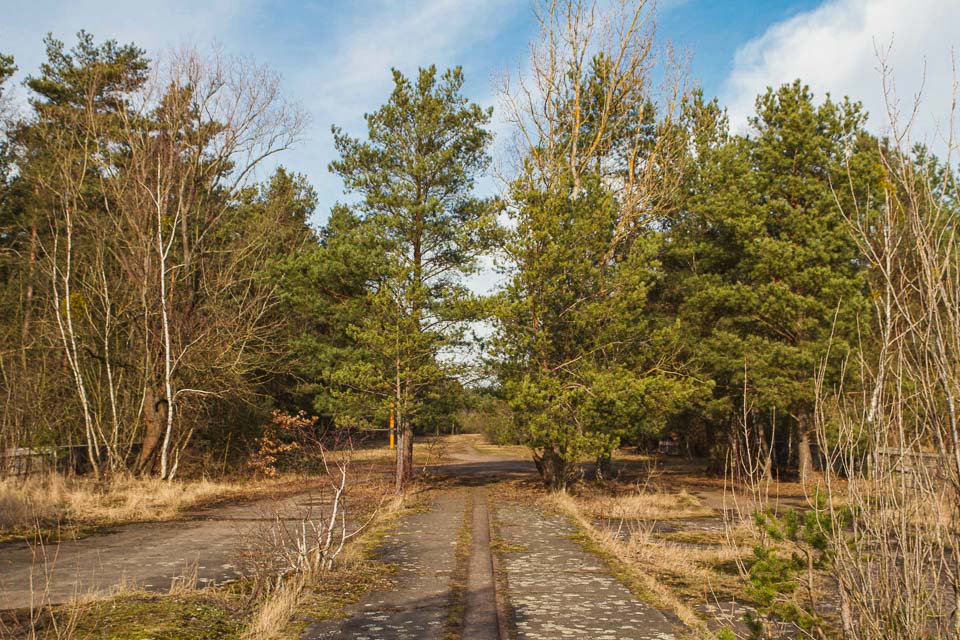
The Abandoned Checkpoint Bravo
Before 1969, Checkpoint Bravo could be found on a motorway bridge over the Teltow Canal. The Autobahn A 115 used to have a different course at the time. It used to zig-zag between East and West Berlin since it was built before the Second World War and everything that happened to Berlin.
Since East Germany wanted to avoid having parts of the road crossing its territory and West Berlin, they built a new motorway and, eventually, the Berlin Wall. But before they moved the Checkpoint Bravo to this new location, they left the old one in place as a relic of the past.
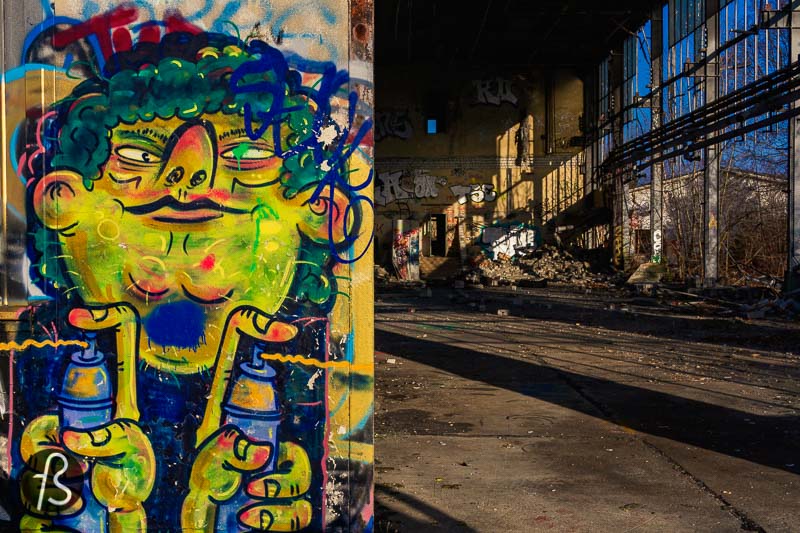
Berlin Lost Places: The Flugplatz Johannisthal
Flugplatz Johannisthal was one of Germany’s first commercial airfields when it opened to the public in September 1909. We passed by bike a few times on our way to Adlershof, and we always wondered what it would look like from inside the fences.
We knew about the abandoned Flugplatz Johannisthal for years and even tried to find our way a few years ago. Still, we only made it in early January 2021.
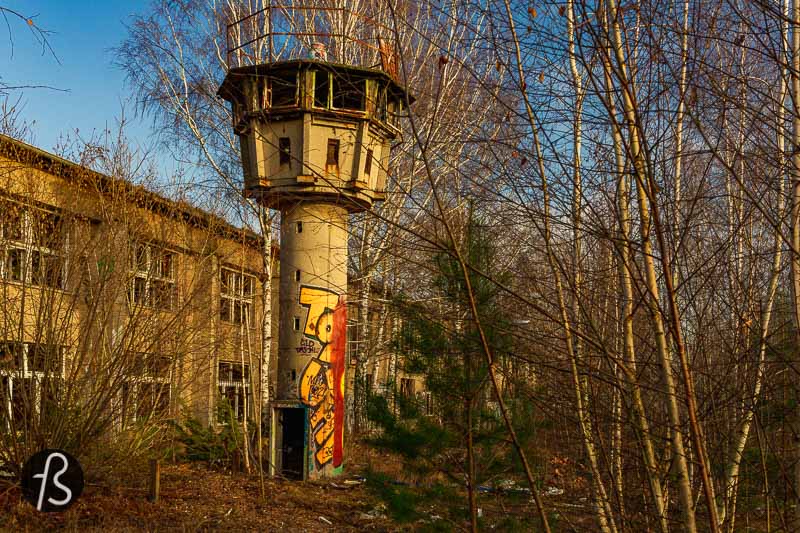
Schloss Schulzendorf: One of the locations from Queen’s Gambit
While we were watching The Queen’s Gambit on Netflix, some places on screen seemed familiar to us. Some places that were supposed to be foreign, like Moscow and Mexico City, looked like places we recognized daily in Berlin. With this thought in mind, we decided to look for Queen’s Gambit locations, and the first place we visited was the Schloss Schulzendorf, also known as the Methuen Home orphanage.
During our research, we learned a lot about the Schloss Schulzendorf. We discovered this historic place is way more interesting than we expected. And, if you want to learn about the history of the Schloss Schulzendorf, you have to click on the link below to visit the article we wrote about it.
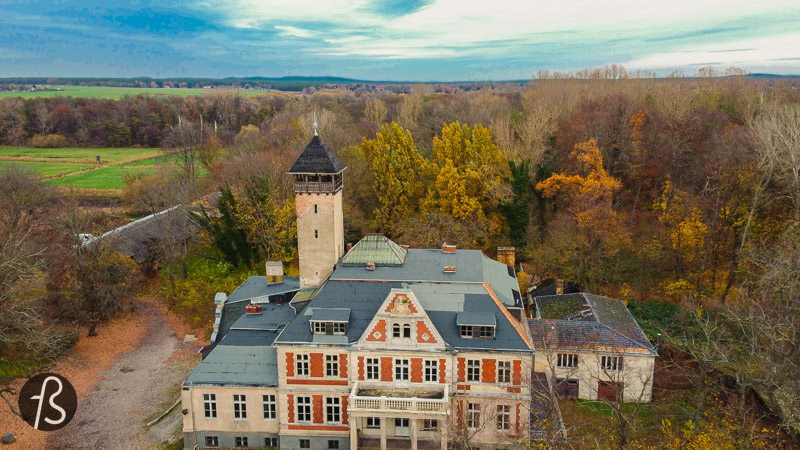
Exploring the abandoned soviet base known as Vogelsang
Vogelsang used to be more than just a Soviet military base. This place used to be a city filled with secrets and soldiers, but today, it lies empty in Brandenburg and rots away in the middle of a forest.
Before the Second World War, Vogelsang was known for its people who worked and lived off the forest. The area changed after the Second World War when it became strategically important to the Soviet Forces in Occupied Germany. Construction of the barracks and the military base started in 1952, and after it was done, it housed up to 15.000 people. It was considered to be the third-largest Soviet base in East Germany.
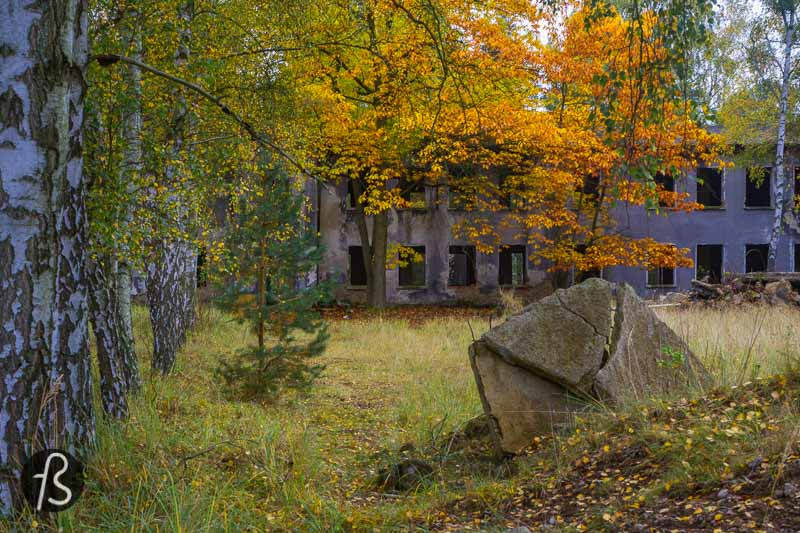
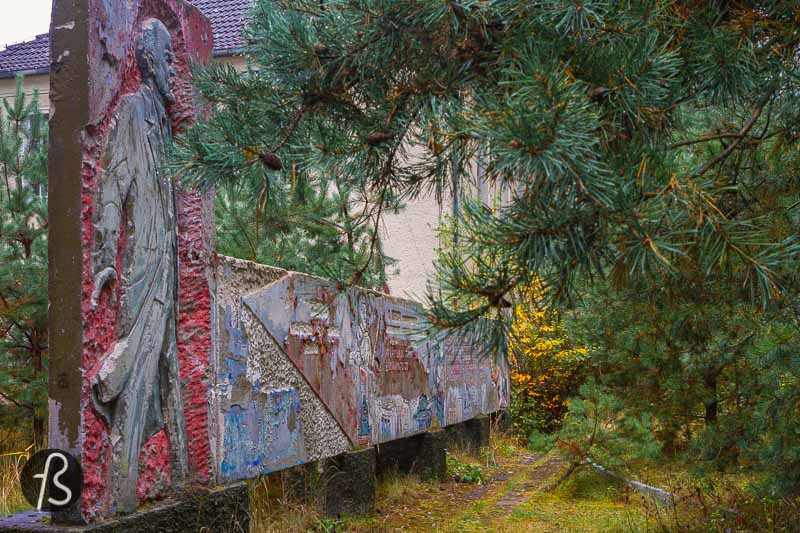
Spreepark in Planterwald
The Spreepark is an abandoned amusement park that has been lying abandoned close to the heart of Berlin since 2002. When you enter the park and start walking around, you can see the remnants of the previous decades, and this is why this location is so unusual for people.
I remember first learning about this park in 2009. A couple of years later, I watched a movie called Hannah that had a lot of scenes from the German capital.
And some of these scenes were filmed at Spreepark, as I learned later on IMDB.

Friedhofsbahn: The Abandoned train tracks between Wannsee and Stahnsdorf
Traditionally, Berlin is known for its vast transport network comprising S-Bahn and U-Bahn lines covering almost 500 km of tracks across the city. The German capital used to have even more train tracks, but some were abandoned due to political divisions, world wars, and economic problems.
One of those is known as Friedhofsbahn, and it is used to connect Berlin-Wannsee to Stahnsdorf. Here, you will see some pictures of the abandoned tracks in the middle of the forest and the history behind them.
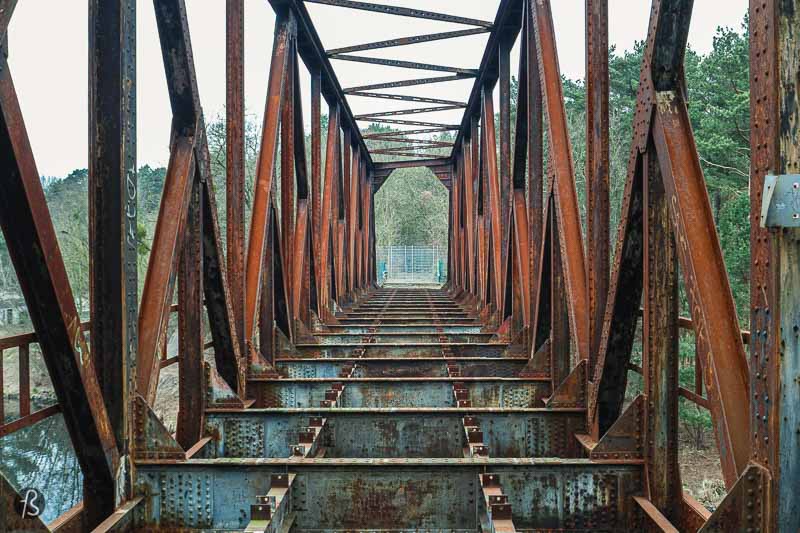
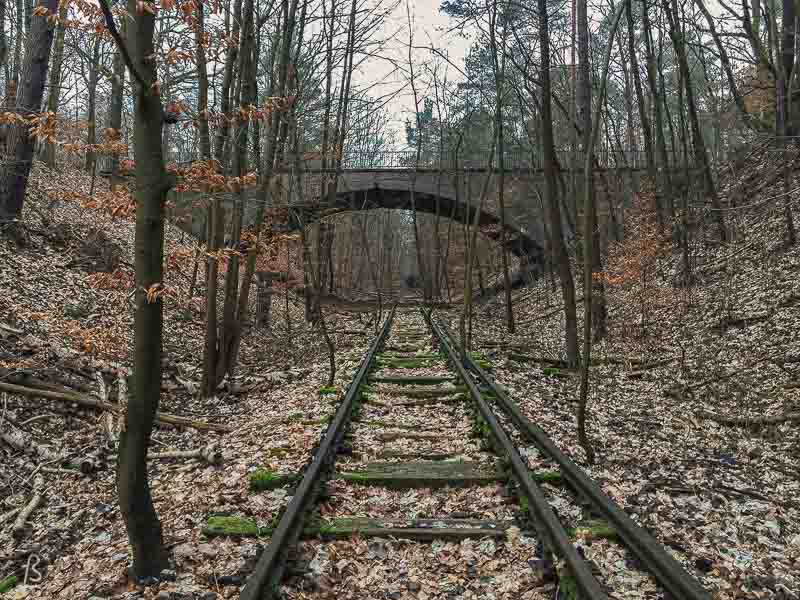
Blub Berlin: the Abandoned Water Park in Neukölln
After our first visit, we decided to call Blub Berlin the Mad Max Water Park of Neukölln. This place used to be a famous waterpark in West Berlin, but it was infested by rats around 2005, and things were never the same.
In English, Blub is short for Berliner Luft- und Badeparadies or Berlin Air and Bathing Paradise. It first opened in Neukölln in February 1985 with a cost of over 40 million Deutschmark and was supposed to be excellent. It’s too bad we never got to see it like that.

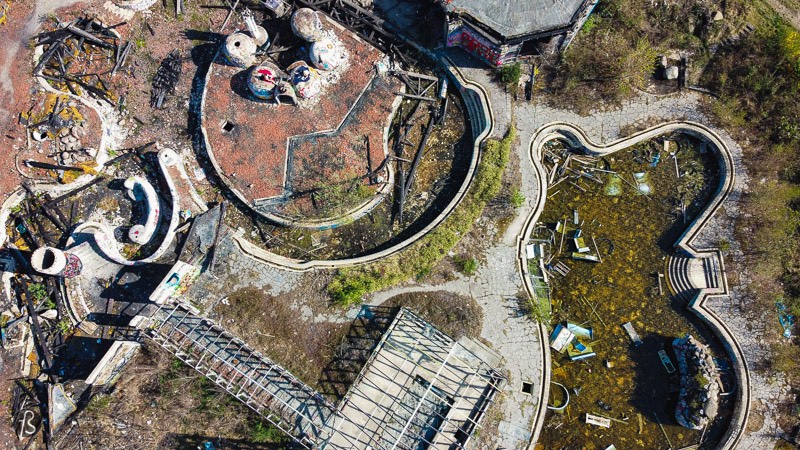
If you are lucky, you can still see Blub Berlin before it is torn down at the end of 2015. Somebody is going to make a lot of money with luxury buildings there. Too bad it won’t be possible to do some urban exploration in Berlin there anymore.
A classic for Urban Exploration Berlin.
The abandoned Flugplatz Rangsdorf
If you manage to walk into the abandoned Flugplatz Rangsdorf, you will never suspect what the place used to be and how much history happened there. It was here that Claus Schenk Graf von Stauffenberg landed after trying to kill Hitler back in 1944, and this is why we took our cameras to explore this abandoned airport ten kilometers south of Berlin city limits.


Hunting down what is left of the Red Army around Berlin
It’s a new millennium, and some Lenin statues remain in Germany. We visited one of these statues in Berlin and continue looking for them nationwide.
One day, we got lucky and found two of them on the same day. That blessed day was back in November 2016 when we took our bikes north and went to Fürstenberg for urban exploration.

Flugplatz Brand — Exploring Soviet Barracks Close to Berlin
Flugplatz Brand is an abandoned airfield about 60 kilometers south of Berlin. It was built in 1938 as an air base for the Luftwaffe, the aerial warfare branch of the Wehrmacht. After the Second World War ended, Soviet Troops took over until 1990, when the airfield was transferred to German authorities.

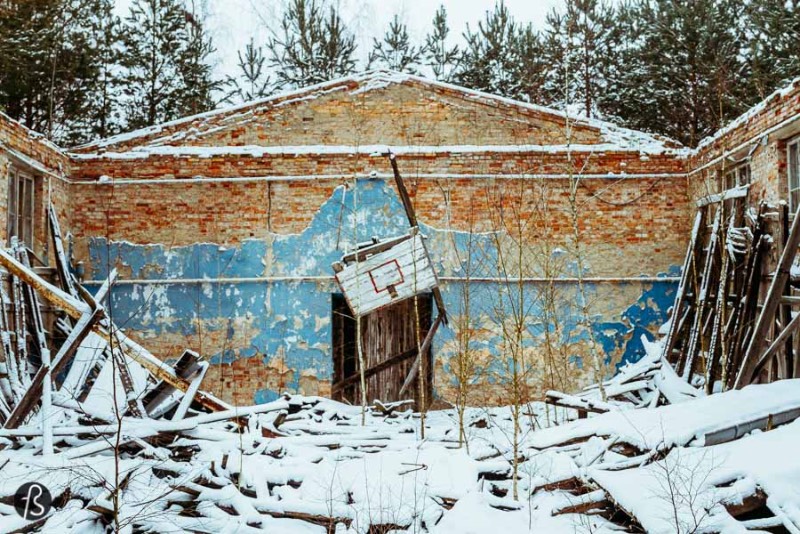
A couple of years later, Cargolifter bought the area and started building the most massive hangar in the world. 2002, the company went bankrupt, and the airship hangar was turned into Tropical Islands, a fantastic tropical-themed water park!
I went to explore Flugplatz Brand in January 2017 when I went to Tropical Islands and realized that the area around the park used to be a military airfield. I looked for some pictures online and found a gold mine of urban military exploration with a Lenin mural, abandoned hangars, and bunkers. And everything seemed terrific, covered in snow!
The Abandoned Pool Freibad Lichtenberg
No swimming is allowed at the Freibad Lichtenberg since it closed in the late 1980s. Some say it was the end of the Berlin Wall, but who knows for sure? Today, you can visit it and think about better times for this abandoned pool in the middle of Lichtenberg.

The pool was built in 1928 and is an addition to the neighboring BVG-Stadion made a couple of years before in 1920. From what I read, the Freibad Lichtenberg was even used by foreign swimmers to train for the 1936 Berlin Olympics, and this put some of the pictures here into a weird perspective.
Krankenhaus Mariendorfer Weg – Abandoned Hospital in Neukölln
We called this place the Abandoned Hospital in Neukölln, but its official name is Krankenhaus Mariendorfer Weg. The complex of hospitals for children and women was built in parts; the first was built in 1917, then expanded in 1969, and a new building for premature babies was built in 1978.
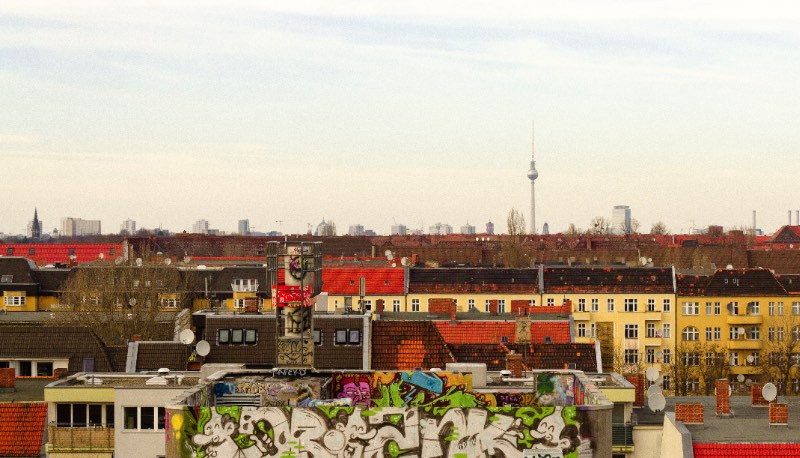
Everything was going well for the Krankenhaus until 2005, when the complex was shut down and moved up the road to an even bigger complex. Now, this hospital lay abandoned in the middle of Neukölln.
The Abandoned Freibad Wernersee in Kaulsdorf
Far away from the tourists that flock to Berlin is a neighborhood called Kaulsdorf. There, you will find the lonely hippo, Knautschke, after a famous hippo born in the Berlin Zoo in 1943.
Knautschke has the entire Freibad Wernersee to himself, but I didn’t see him enjoying much of it when I was there. Maybe it was cold; perhaps it was the fact that the pool was frozen. Maybe he was just waiting for a time when he would have company, but this will probably never happen.
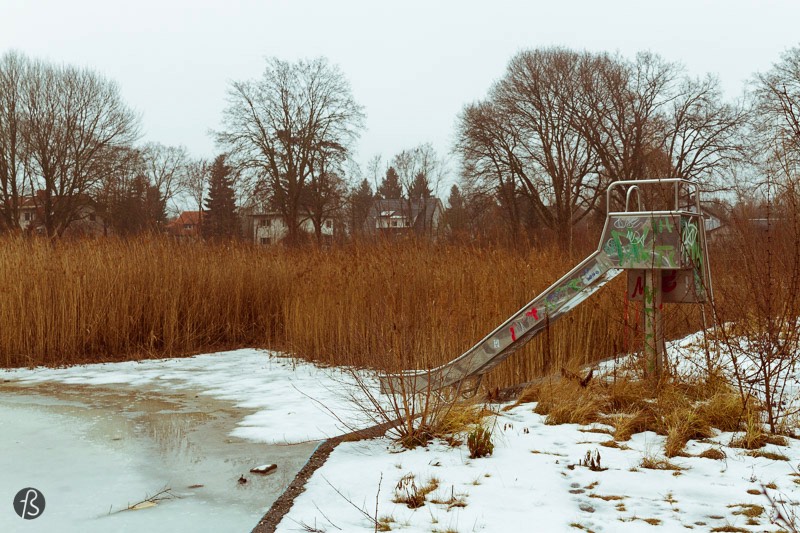
Freibad Wernersee was closed in 2002 after some concerns about the water quality there. This is a problem because this is a natural pool with water from the ground. This was why this became the first outdoor public pool in Berlin back in 1905.
A Visit to Güterbahnhof Pankow-Heinersdorf
There are no trains at the Güterbahnhof Pankow-Heinersdorf, but they used to come here a lot before somebody figured out how to make them drive in the other direction. Yes, this place was built to allow trains to go in different directions, and it is one of the only remaining buildings with this history in Germany.

Arriving at the Güterbahnhof Pankow-Heinersdorf is pretty simple. You just need to take a train to S-Bahnhof Pankow-Heinersdorf, and you can see the place from the train tracks. Go over the bridge, and you will find your way inside.
A Visit to an Abandoned Boat in the Spree River
You’ve probably seen an abandoned boat in the Spree River. It lies quiet between the Molecule Man sculpture and Badeschiff and has been there since 1996. That was the year when German bureaucracy showed Franz Günther Van de Lücht, the owner of the boat, that his dreams of cruising through the waters wouldn’t become reality. But there is a lot more to this story than I thought it would be.
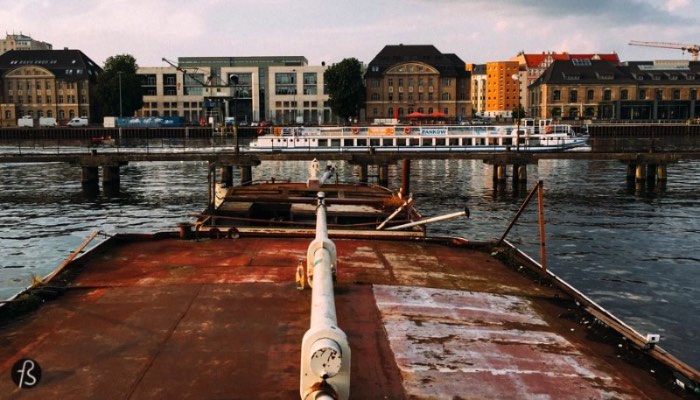
Kaserne Krampnitz in Potsdam
Regarding Urban Exploration, the best place we ever went to was Krampnitz. We don’t even need to think twice about that. Krampnitz is the easy answer.
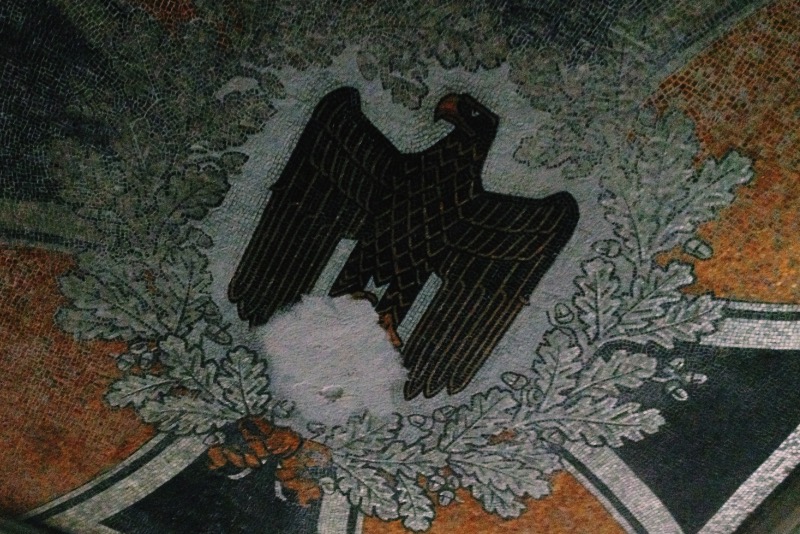

Krampnitz Kaserne was a military complex in Potsdam that was close to Berlin. The area was built before the Second World War as a training center for Nazi Germany, and later, it was used by the Soviet Forces stationed in Berlin.
The military base was abandoned by Soviet Troops in 1992, and it remains empty until today since most of the plans to build something there seem to go nowhere. One of the most excellent places for Urban Exploration is Berlin.
We wrote about our visits to Krampnitz here: the first one in August 2013 and the other in November 2013.
Chemiewerk Rüdersdorf – a HUGE Chemical Factory
The Chemiewerk Rüdersdorf is a giant abandoned factory in Rüdersdorf, a small town close to Berlin. The factory started its life in 1899 as a cement factory, and through the years, it has produced bauxite, animal feed, and phosphates for farming purposes. All of this is in the past. This giant abandoned factory is standing still without any practical use.

In March 2015, we gathered a small group of friends and took our bikes on a train to Erkner. Once we reached Erkner, we put our bikes on the road and cycled to the Chemiewerk Rüdersdorf. It was forward to spot the giant building surrounded by fences with razor-sharp barbed wire.
Siemensbahn: A Ghost Train Track
Another abandoned place to explore in Berlin is Siemensbahn, with its famous S-Bahnhof Siemensstadt Station. This is a deserted train line in the northern part of Berlin; we still don’t know how it is still there.
The Siemensbahn S-Bahn line was built at the beginning of the 20th century to bring more than 17.000 workers to the Siemens factory close by. After the Second World War, Siemens moved its headquarters to Munich, and there wasn’t much to do with this S-Bahn line. When it comes to urban exploration in Berlin, nothing beats this place.
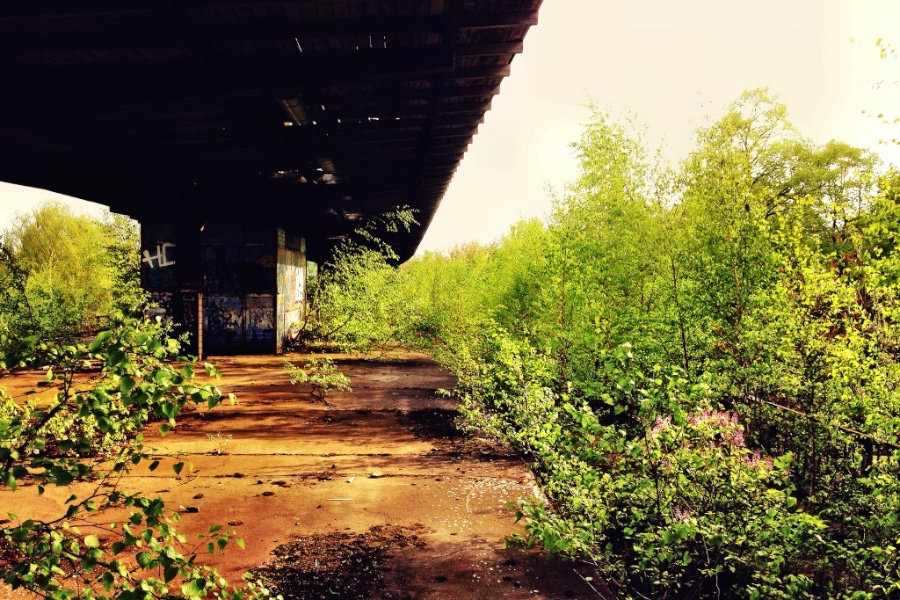
History says that the decrease in passengers in the late 70s was so substantial that, in September 1980, the line crossing the former Siemensstadt was shut down forever. Now, only junkies and explorers visit this place.
SS Brotfabrik in Oranienburg
The SS Brotfabrik was part of Sachsenhausen Concentration Camp, and from 1941 until 1991, it worked as a full-time bakery. Nowadays, you can visit the place, kind of.
It’s in Oranienburg, a town north of Berlin, that you’ll find the SS Brotfabrik. You will be exploring one of the buildings from the Sachsenhausen Concentration Camp Complex there.
The building itself is pretty much empty, but the creepiness of the place makes everything interesting. The old baking ovens and the forest surrounding it will give you chills. We are sure about it.
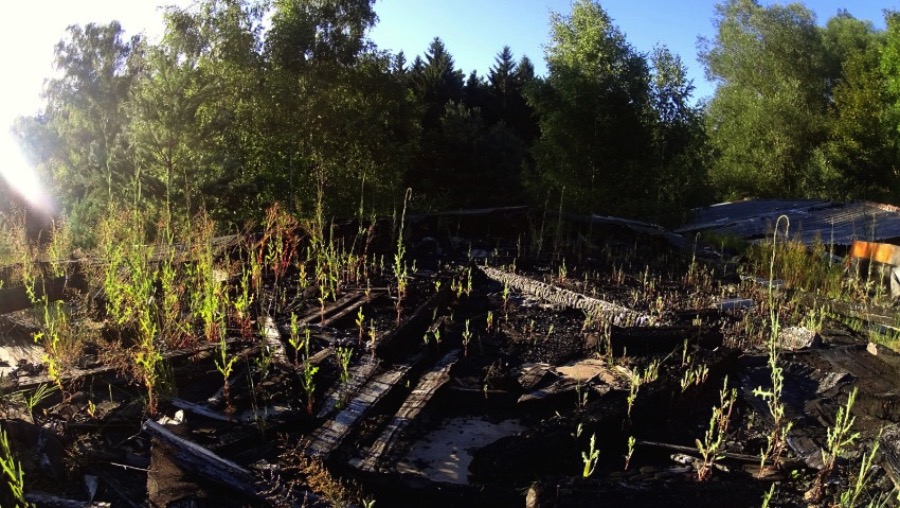
Elisabeth Sanatorium between Berlin and Potsdam
Elisabeth Sanatorium in Stahnsdorf is an abandoned clinic built in 1912 and first used to treat tuberculosis. Later, during the DDR era, it became the only facility to treat skin and lymph node tuberculosis. But this was long ago, and nothing is left of these years of glory.
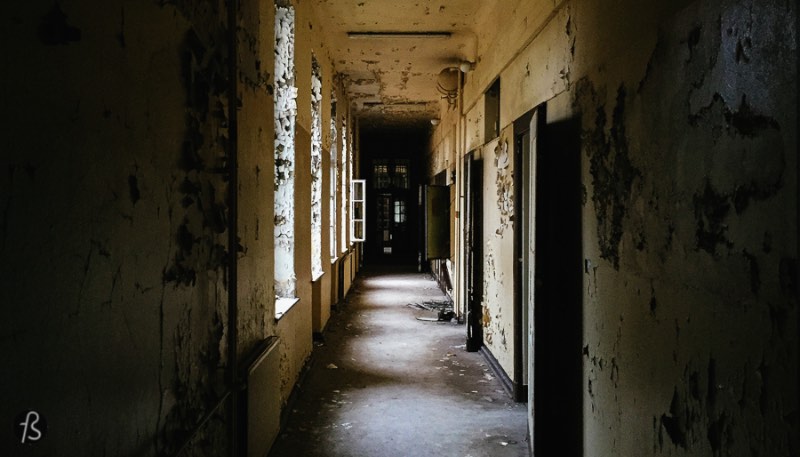
We explored the Elisabeth Sanatorium in Stahnsdorf on a cold Sunday morning in January 2015. There was still some snow on the ground, and everything was gray around this abandoned building between Berlin and Potsdam.
Urban Exploration Berlin: Flugzeughallen Karlshorst
The history of this place dates back to 1911 when Germany and the world were still learning how to fly. This is how Flugzeughallen Karlshorst was born, so we decided to explore the place. Flugzeughallen Karlshorst lies somewhere in Karlshorst, an area of Berlin not famous for its tourist spots.
The site is renowned for being the place where the unconditional surrender of Nazi Germany against the Allied forces was signed on the 8th of May 1945. But Flugzeughallen Karlshorst doesn’t have the glory of those days.
The place seems ready to be torn down, and construction workers are everywhere. You need to go there for the First World War hangars!

Urban Exploration Berlin – Want to know more?
If you want to know more about urban exploration in Berlin, you should buy the book that the guys from Abandoned Berlin wrote. You will learn a lot about these abandoned places in Berlin and, maybe, where you can find them.
We have a fantastic post about what you should bring with your urban exploration; read it here. We even interviewed Abandoned Berlin about the book and urban exploration; you must read it.
You should follow Abandoned Berlin online for tips and ideas for new places to explore urban in Berlin.
Pingback: Blub Berlin: An Abandoned Water Park in Berlin-Neukölln via @fotostrasse
Pingback: SS Brotfabrik: Urban Exploration in Oranienburg via @fotostrasse
Pingback: Spreepark: An abandoned amusement park in Berlin
Pingback: The Abandoned Hospital in Neukölln
Pingback: Berlin Summer: a Summer guide to the German Capital
Comments are closed.